Sabbath
Max Weber
1919
Image

Engage with this Source
Creator Bio
Max Weber
1881–1961
Born in Białystok, Max Weber was a pioneer of visual modernism in the United States. His family settled in Brooklyn when he was ten. Weber studied at the Pratt Institute in Brooklyn from 1898 to 1900. After teaching at public schools in Virginia and Minnesota, he moved to Paris in 1905 and immersed himself in modernist art circles. Weber returned to New York in 1909 and introduced cubism to America. Although the initial critical response to his paintings was hostile, a positive appreciation emerged over time. After World War I, his style became less avant-garde and more representational. In 1930, the Museum of Modern Art honored him with a retrospective of his work, the first solo exhibition of an American artist at the museum.
You may also like
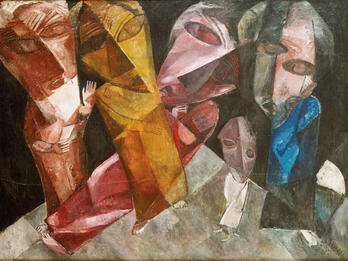
Eternal Wanderers
At first Eternal Wanderers seems like an abstract assemblage of colorful shapes. A closer look, however, reveals a group of people, young and old, with mask-like faces, teetering on tilting ground…
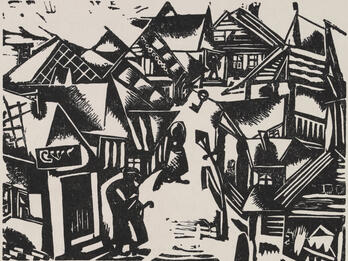
Shtetl
This woodcut was published in Petrograd (Saint Petersburg) after Aronson had left the Soviet Union. In it, Aronson combined elements of cubo-futurism and constructivism. Several figures can be spotted…
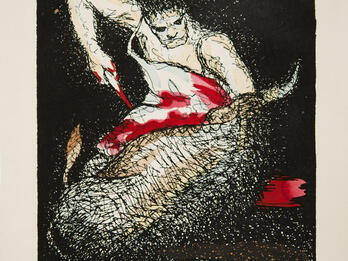
The Shohet (from “Had Gadya”)
The violence of the Passover song “Had Gadya” (“Who Knows One”) clearly spoke to this illustrator’s sense of horror following World War I.
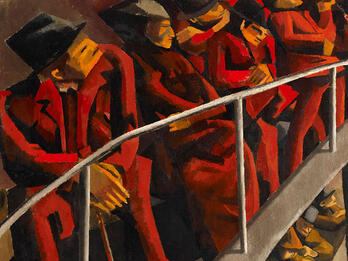
Ghetto Theatre
Before World War I, Bomberg depicted the East End of London, where he had grown up, as a site of immigrant vitality. After a harrowing experience in the trenches and difficulties after the war…
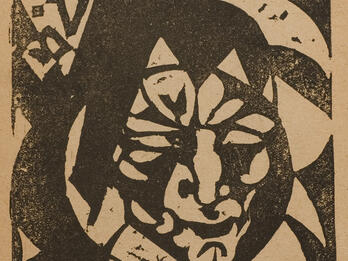
Woodcut no. 1
Tkhiyes-hameysim (The Resurrection of the Dead) is a dramatic poem by Moyshe Broderzon inspired by medieval Christian “mystery” (or “miracle”) plays that presented bible stories and were performed in…

Man with Torah
Frenkel, whose work was shaped by the School of Paris (École de Paris), played a key role in bringing modernism to Israeli art. Among his students were prominent members of what is known as the Land…

